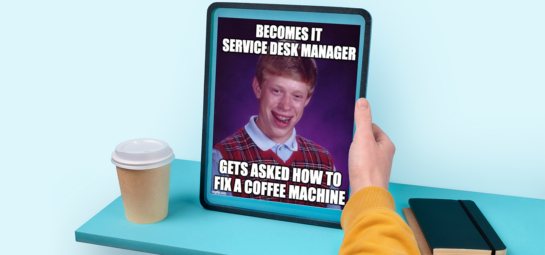The characteristics of successful organizational cultures

Successful organizational culture. When I say it, one company automatically comes to mind: Google. Everyone would love to play games at their headquarters all day, right? But is that all there is to it? I’ll explain the actual core ingredients of successful organizational culture – and games don’t have that much to do with it.
Successful organizational culture takes your service delivery to the next level, improving the quality of life for both your employees and your customers.
What is organizational culture?
When we talk about organizational culture, we talk about how people behave in organizations. This ranges from the shared values and beliefs of an organization, to the way employees interact with each other.
At a basic level, we can divide organizational culture into 4 aspects: motivation, purpose, agreement, and behavior.
The four aspects of organizational culture define the type of organization you have. When you understand how organizational culture works, you can use it for your own benefit and turn indifferent employees into engaged, motivated employees.
Organizational culture isn’t only important for your employees. Yes, working in a successful organizational culture boosts your employees’ productivity. But how you interact with your customers is also a direct result of your work culture. Successful organizational culture takes your service delivery to the next level, improving the quality of life for both your employees and your customers.
Below, I’ll explain each of the four aspects and how they contribute to your work culture. Let’s find out how to establish a successful organizational culture!
1. Motivation
Lots of organizations think having foosball tables and video games makes or breaks their work culture. Nothing is further from the truth. Of course everyone likes blowing off steam in a “friendly” Mario Kart match with their coworkers in between meetings. But such perks mean nothing when your employees aren’t motivated.
So how do you truly motivate your employees?
Encouraging their development and growth is key. At TOPdesk, we are big on trust, freedom, and responsibility. We trust our employees to come up with cool initiatives and ideas. They always have the freedom to tackle their tasks whichever way they want, as long as they take responsibility for their work.
With such a system, you challenge your employees to make the right decisions. Without a sense of empowerment or intrinsic motivation, your employees will wander off to another job that will offer them the challenge they need.
2. Purpose
Motivation is the first step. But without purpose, motivation means nothing.
Purpose tells your employees where your organization wants to go. If your employees don’t know what the bigger picture is, a lot of their expertise is going to waste on tasks that don’t get you any closer to your goals. You have to set clear overarching goals for your entire organization so every single one of your employees knows what you’re trying to achieve together.
To boost our employees’ sense of purpose, TOPdesk encourages them to visit one of our 11 branch offices all over the world. Once there, our employees interact with their international coworkers, learn about their way of working, and foster a sense of community – very important for a successful organizational culture!
How you interact with your customers, is also a direct result of your work culture
3. Agreement
Let’s say you have motivation and purpose down. Great.
Now, the most important thing is achieving agreement in your organization. This doesn’t mean everyone has to agree with each other all of the time. It means that all your employees are on the same page and have the same vision.
This is especially important for recruitment. Your selection process should focus on how well a potential employee matches your organizational culture.
I know it’s tempting to focus solely on the skills of a candidate. But remember this: skills can be developed over time, but personality can’t. You’re either a good match with the culture, or you’re not.
That’s why at TOPdesk, recruitment focuses more on the people and less on their skills. In only a third of our interviews, we talk about knowledge and skills. In the rest of the interviews, we like to assess a candidate’s personality and their level of interactivity.
Should you only focus on new hires? Of course not! Have your existing employees do frequent self-assessments so you can identify any potential culture clashes and see where you need to improve.
4. Behavior
Motivation, purpose, and agreement all culminate in one thing: behavior. What will your employees do when you give them trust, freedom, and responsibility?
When you stimulate their curiosity, you bring out the best of your employees. I’ve seen it happen myself. After strategically organizing our IT department according to each skill set, the number of open calls dropped from 600 to 250. All because TOPdesk gave IT the trust and freedom to organize themselves into teams, with each employee doing what excel at.
This doesn’t mean that our IT department never makes mistakes. Far from it! They even created a “Learning by Error” trophy, which we proudly display at our service desk. It reminds us of what we learn from our mistakes and teaches others to be curious and proactive.
Empowerment is key
Having a successful organizational culture based around trust, freedom, and responsibility is essential for motivated employees. Your employees will thrive, and with them, your service delivery will go through the roof – resulting in happier customers than ever!
Did you know workforce enablement empowers your employees even more? Download our workforce enablement toolkit to get started!
Inspire others, share this blog




